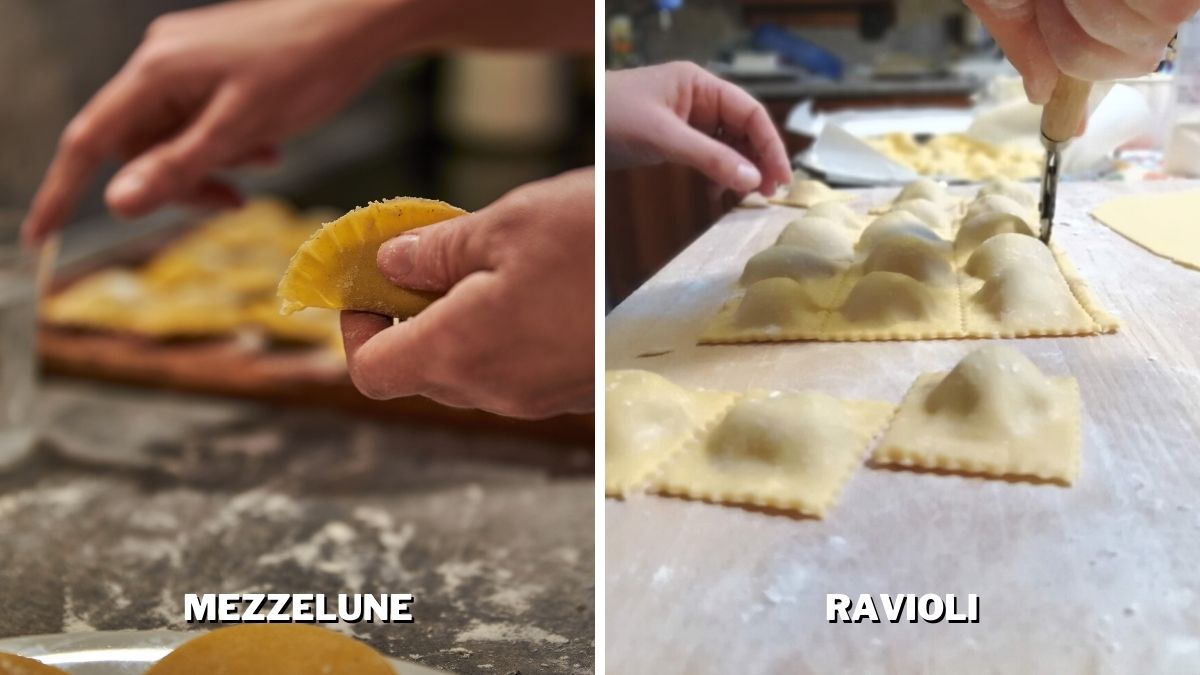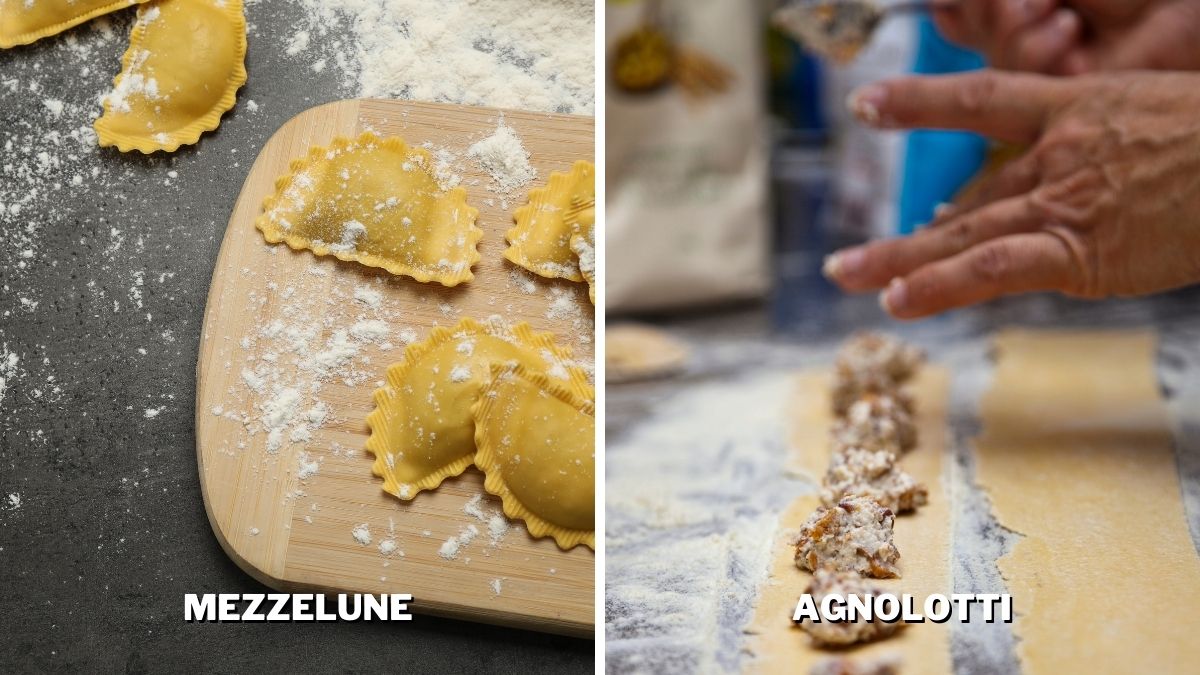Mezzelune vs. Ravioli: Differences & Uses

Mezzelune and ravioli are very similar, so it is easy to confuse them. It has happened to me before, since some ravioli versions look more like mezzelune. However, some slight differences make them two individual types of pasta. So, what are the differences between mezzelune and ravioli?
Mezzelune is a half-moon-shaped stuffed pasta pocket traditionally filled with a blend of cheeses or spinach and mushroom filling. Ravioli is square-pocket shaped and is traditionally filled with ricotta cheese filling. They are both made with egg-based dough and have similar uses.
Even though the differences between mezzelune and ravioli are minor, they do exist and make these two types of pasta original pasta varieties. In the following paragraphs, I will explain the differences between mezzelune and ravioli and help you better decide on which one you want to enjoy.
What Are the Differences Between Mezzeluene and Ravioli?
Mezzelune and ravioli are very similar in many aspects, making the shape and stuffing the most significant differences. However, there are some differences in other aspects, too. Below I will explain the aspects in which they are similar and those in which they differ.
Ingredients and Preparation
Mezzelune and ravioli come from the same base ingredients, i.e., eggs, flour, and water. The dough for both is made exactly the same, so you can make a single dough and use it to make both of these pasta types.
Making the dough follows the traditional pasta-making method — i.e., making a hole in the flour and placing the eggs inside. Then, the dough is kneaded to become a single homogenized unit. Water is added if the dough is too dry and falls apart instead of becoming a single elastic lump.
Once the dough is done, for ravioli, it is divided into two strips onto which the filling is placed. However, the filling is not smeared onto the bottom strip. Still, it consists of separately placed spoonfuls of ricotta cheese with space in between.
The top strip is then placed onto the balls of filling, and it is gently rolled over with a rolling pin. The individual ravioli are then cut, and the edges are sealed with a fork.
For mezzelune, the dough pieces are separated from the get-go. Each piece contains a spoonful of filling in the center. Each dough piece with filling is then covered with another dough piece, and the pocket is then sealed. So if you plan on making ten mezzelune pieces, you need 20 pieces of dough.
The mezzelune pockets are half-moon shaped (which is where the name comes from) by folding the edges, creating a wavy edge.

Filling
The traditional filling for mezzelune is a cheese blend, but often it comes filled with spinach and cheese, spinach and mushrooms, or all three. The traditional filling for ravioli is ricotta cheese, but it can also be filled with meat, mushrooms, or vegetables.
In general, ravioli is more variable in terms of filling than mezzelune.
Once they are completely done, both types of pasta are placed in slightly salty boiling water and cooked for 4-5 minutes. After they are cooked, they can be combined in many ways.
Appearance and Taste
The appearance and filling are the most significant differences between ravioli and mezzelune. While ravioli is square-shaped with visible straight strips on the edges and a circular-shaped filling bump, mezzelune is half-moon shaped, with a finger-pressed straight edge and folded semi-circular edge.
Without filling, they would taste exactly the same, as they use the same dough; therefore, the filling is what makes them taste different. Although they can be filled with another type of filling, mezzelune is traditionally filled with a cheese blend and ravioli with ricotta cheese.
Uses
You can combine both of these pasta kinds with different sauces, broths, soups, and salads, or make them side dishes to a main course. They tend to combine with the same ingredients giving very similar results.
The dishes you pair them up with depend on the filling, but both are incredibly versatile and easy to pair. I usually pair them up with similar sides so I don’t really have to think as much, so you can really do as you like.
Varieties
Even though they have their traditional fillings and uses, these kinds of pasta are very variable, which is natural as they are pasta varieties. Being very versatile and receptive to variations is the most significant trait of pasta, so the two are no exception.
You can find meat-stuffed ravioli and ravioli stuffed with spinach, mushrooms, vegetables, and cheeses. The same goes for mezzelune, as you can find it with various fillings.
What Are the Differences Between Mezzeluene and Agnolotti?
Mezzelune and agnolotti differ from the very beginning, as they are made from different doughs. Mezzelune is made from dough containing eggs, flour, and water, while agnolotti is made with eggs, flour, and water, but it also contains milk and olive oil.
While mezzelune is half-moon shaped, agnolotti is rectangular. Agnolotti is folded, while mezzelune is made with two individual pieces sealed together.

